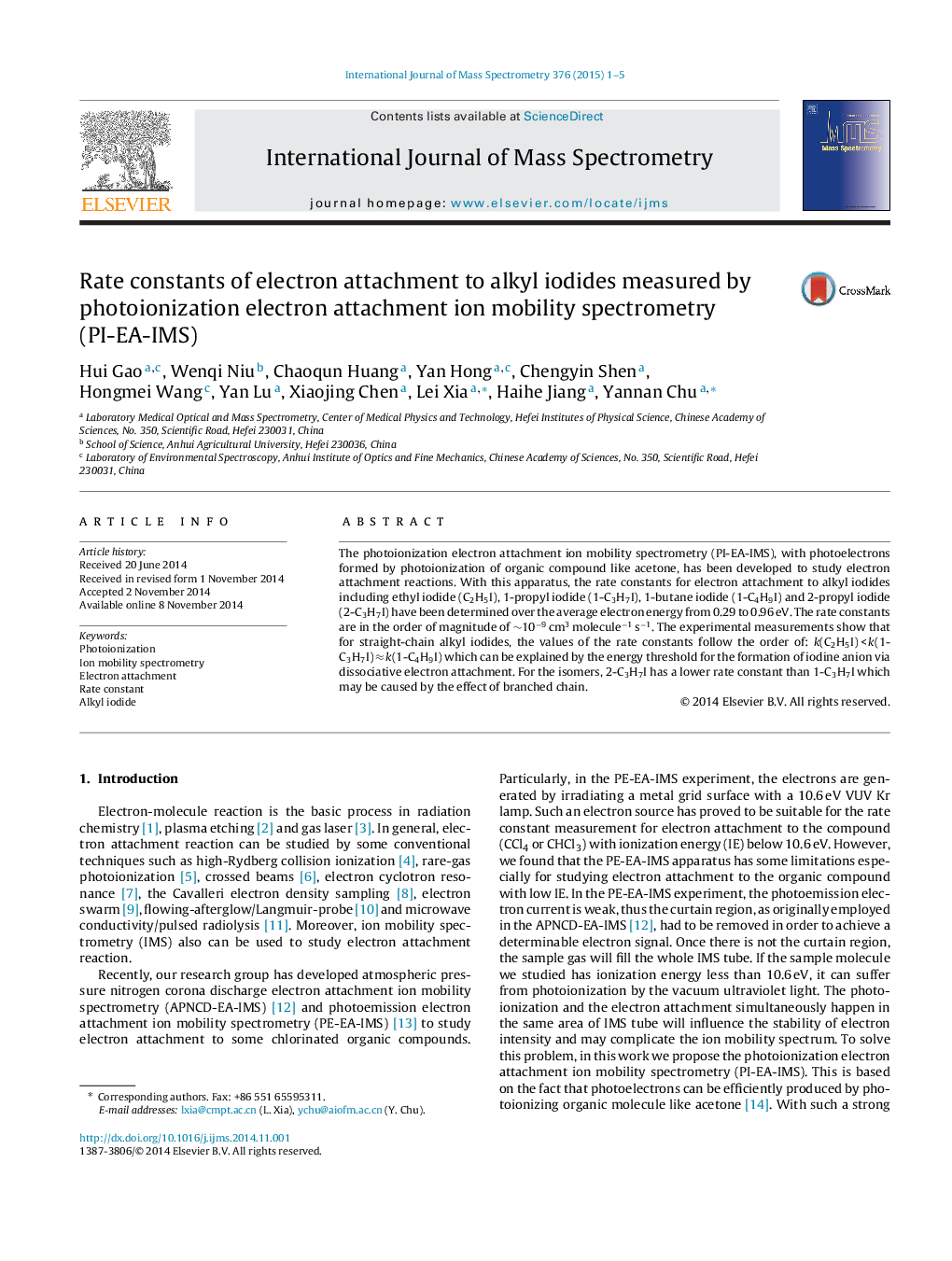| Article ID | Journal | Published Year | Pages | File Type |
|---|---|---|---|---|
| 1193003 | International Journal of Mass Spectrometry | 2015 | 5 Pages |
•Develop photoionization electron attachment ion mobility spectrometry (PI-EA-IMS) to study electron attachment reaction.•Successfully determine the rate constants of electron attachment to CCl4, C2H5I, 1-C3H7I, 1-C4H9I and 2-C3H7I.•Reasonably explain the differences in electron attachment rate constants.
The photoionization electron attachment ion mobility spectrometry (PI-EA-IMS), with photoelectrons formed by photoionization of organic compound like acetone, has been developed to study electron attachment reactions. With this apparatus, the rate constants for electron attachment to alkyl iodides including ethyl iodide (C2H5I), 1-propyl iodide (1-C3H7I), 1-butane iodide (1-C4H9I) and 2-propyl iodide (2-C3H7I) have been determined over the average electron energy from 0.29 to 0.96 eV. The rate constants are in the order of magnitude of ∼10−9 cm3 molecule−1 s−1. The experimental measurements show that for straight-chain alkyl iodides, the values of the rate constants follow the order of: k(C2H5I) < k(1-C3H7I) ≈ k(1-C4H9I) which can be explained by the energy threshold for the formation of iodine anion via dissociative electron attachment. For the isomers, 2-C3H7I has a lower rate constant than 1-C3H7I which may be caused by the effect of branched chain.
Graphical abstractFigure optionsDownload full-size imageDownload high-quality image (107 K)Download as PowerPoint slide
